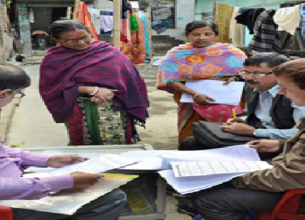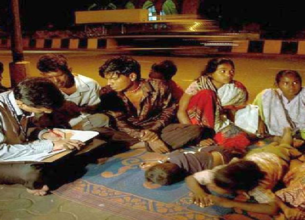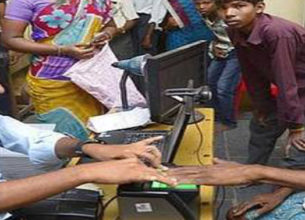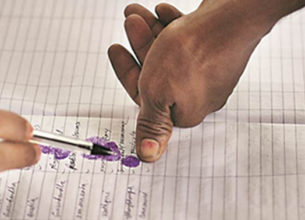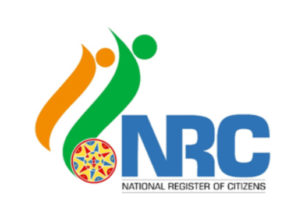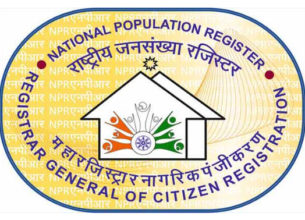CENSUS – CHALLENGES & IMPORTANCE
14, Feb 2020

Prelims level : Citizenship
Mains level : GS-II Important Aspects of Governance, Transparency and Accountability, e-governance- Applications, Models, Successes, Limitations, and potential; citizens charters, Transparency & Accountability and Institutional and Other Measures.
Context:
- Instances of the field enumerators coming under attack for some of the ongoing NSS surveys due to the mistrust over CAA and NRC, is an issue for concern. The House Numbering and Houselisting operation and the updation of the National Population Register, set to begin in April for Census 2021, is also expected to be welcomed with such hostility among the citizenry.
What is Census?
- Population Census is the total process of collecting, compiling, Analyzing or otherwise disseminating demographic, economic and social data pertaining, at a specific time, of all persons in a country or a well-defined part of a country.
- As such, the census provides a snapshot of the country’s population and housing at a given point of time.
Why Census?
- The census provides information on size, distribution and socio-economic, demographic and other characteristics of the country’s population.
- The data collected through the census are used for administration, planning and policy making as well as management and evaluation of various programmes by the government, NGOs, researchers, commercial and private enterprises, etc.
- Census data is also used for demarcation of constituencies and allocation of representation to parliament, State legislative Assemblies and the local bodies.
- Researchers and demographers use census data to Analyze growth and trends of population and make projections.
- The census data is also important for business houses and industries for strengthening and planning their business for penetration into areas, which had hitherto remained uncovered.
History of Census in India
- The earliest literature ‘Rig-Veda’ reveals that some kind of population count was maintained during 800-600 BC in India.
- The ‘Arthashastra’ by ‘Kautilya’ written in the 3rd Century BC prescribed the collection of population statistics as a measure of state policy for taxation.
- It contained a detailed description of methods of conducting population, economic and agricultural censuses.
- During the regime of the Mughal king Akbar, the administrative report ‘Ain-e-Akbari’ included comprehensive data pertaining to population, industry, wealth and many other characteristics.
- A systematic and modern population census, in its present form was conducted non synchronously between 1865 and 1872 in different parts of the country.
- This effort culminating in 1872 has been popularly labeled as the first population census of India.
- However, the first synchronous census in India was held in 1881. Since then, censuses have been undertaken once every ten year.
Stages of Census
a) Preparatory Work
b) Enumeration
c) Data processing
d) Evaluation of results
e) Analysis of results
f) Dissemination of the results
g) Systematic recording of Census experience
- The preparatory work of census includes the House Numbering and Houselisting operation.
Census 2021:
- The 2021 Census of India, also the 16th Indian Census, will be taken in 2021.
- The Registrar General and Census Commissioner through an official notification has announced that 31 questions will be collected by the enumerators from every household during the house listing and housing census exercise.
- The other questions related to the main source of lighting, whether the family has access to a toilet, waste water outlet, availability of kitchen and LPG or PNG connection and main fuel used for cooking were also to be asked by the enumerators.
- It is a massive exercise and will be massively expensive, involving about 30 lakh enumerators and field functionaries (generally government teachers and those appointed by state governments).
- First Digital Census: The data collected during the 2021 Census will be stored electronically.
- Earlier, the census data used to be preserved for 10 years and then it was destroyed. From the 2021 Census it will be stored forever in electronic format.
Issues with the Census 2021:
- The NPR first prepared in 2010 under the provisions of the Citizenship Act, 1955 and Citizenship Rules, 2003 and subsequently updated in 2015 — will also be updated along with house listing and housing Census (except in Assam).
- Amid the backdrop of views of citizenry against CAA and NPR, the National Sample Survey Office field officials have been attacked in some areas of Kerala, Uttar Pradesh, Andhra Pradesh and West Bengal mistaken as Census officials.
- At its core, the fears of a tainted Census stem from the NPR, breaking one of the cardinal rules in objective data collection, the preservation of anonymity.
- As he NPR is more likely to result in questioning their citizenship, people may choose to obfuscate or misreport.
- Because the NPR and Census are to be run concurrently — and both are under the auspices of the Registrar General of the ministry of home affairs (also the key architect and driver of the CAA) — this loss of credible information is likely to extend to the Census.
- Given that those born after July 1987 will have to offer proof of their parents’ citizenship, and some segments of citizens, especially Muslims, are particularly vulnerable to having their citizenship questioned, there will be considerable incentives for people to misreport age, religion and language data.
- The Census data is, by definition, a means to serve government goals. The compact between a State and its citizens is built on a foundation of trust, one that is based on a minimal presumption that people are citizens of that State to begin with. The erosion of that trust will undermine the Indian State’s ability to gather credible data and ultimately makes the government incapable of framing effective policies for its people.



